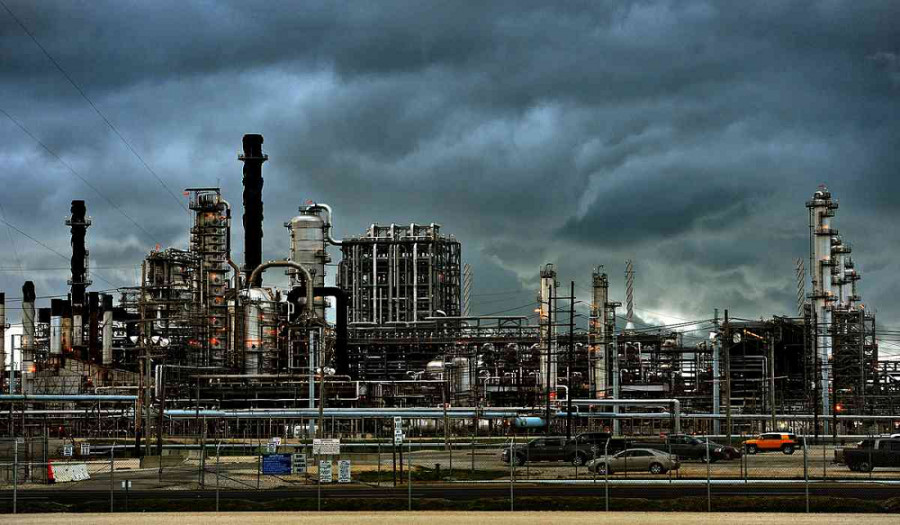The US residential construction sector hit an eight-month high in November. However, the manufacturing PMI did not reach the predicted values. Investors are probably hedging their risk with real assets.
US construction boom proceeding, manufacturing PMI declining
The US residential construction sector hit an eight-month high in November, indicating that builders are progressing significantly in clearing backlogs of orders despite continued supply constraints and labor shortage.
According to official reports released on Thursday, last month the number of residential housing starts rose by 11.8% to 1.68 million at an annual rate. Economists estimated that on average the growth totaled 3.1% in November compared to the previous month, while the growth rate was 1.57 million.
Construction permits, which are the projected basis for the construction futures sector, rose to 1.71 million units year-on-year in November. Demand for new real estate, driven by low mortgage rates, a lack of options in the secondary market and the desire for more space in the pandemic era, persisted despite exorbitant prices.
Homebuilder confidence levels hit a 10-month high in December, according to surveys, due to higher sales and a greater flow of potential buyers.
Nevertheless, delays in the supply chain and labor shortages are affecting builders' capabilities.
Single-family starts increased by 11.3% in November to 1.17 million units at an annual rate, the highest reading since March. Multifamily starts, a less stable indicator, jumped nearly by 13% to 506,000, the highest value since last February.
A sign that builders are cutting the amount of unfinished construction is that the number of single-family homes under construction rose to 752,000 in November, the highest reading since 2007.
Single-family home starts in the southern states jumped by 14.4% to 701,000 to an annual rate, the highest reading in 15 years. Single-family units also became popular in the other three regions.
Unfavourable figures
In the rest of the sectors, the reports are not very positive.
Initial jobless claims in November rose above October's forecast from 188,000 to 206,000. That is 6,000 more applications than the government had planned. At the same time, the total number of people receiving unemployment benefits fell by 150,000 compared to last month.
This contradictory data may indicate a change in the internal policies of the employment centers. It is likely the case of a tightening of benefit policies and an increase in claims, resulting in lowering the figure and helping the Fed justify a rate hike.
The situation is even more deteriorating in the manufacturing sector. For example, the PMI released by the Federal Reserve's Philadelphia branch totaled only 19 points. That was nearly half the level of the previous month, which remained at an unattainable 28 points.
Manufacturing activity declined even more significantly, it amounted only to15 points out of a projected 30 points. Last month that figure was 39 points. The new orders index totaled only 13.7 compared to the previous month's volume of 47 points.
Manufacturing capacity is still utilized at 76%, however industrial production has fallen from 1.7% in October to 0.5%, plunging to the level of extreme November 2020.
This decline puts an end to discussions of a reflationary economy as there was no actual recovery: annual industrial production totaled only 5.27% versus 5.29% the year before (as of November 2020). That is to say, this year the United States has produced even less goods cumulatively than it did last year.
However, the ISM Services index almost hit the projected 58 points, lacking only half a point. Amid other figures, this sector looks the least affected.
The manufacturing index was 57.8, 0.8 points down the forecast and half a point below the previous month's figures.
This is negative data, indicating a freeze in manufacturing activity due to the new variant Omicron. The situation may also have affected production chains.
Moreover, December is always a turbulent month as many people are going to pay taxes, bonuses and dividends, while the stores are piled with a lot of gifts for customers. Retailers have already bought items to celebrate, so this downturn is not surprising.
Besides, the real estate boom can be attributed to hedging inflation risks as well as an imminent rise in interest rates, which will increase the ultimate mortgage rate.
These figures are likely to influence the Fed's decision to tighten monetary policy for the next quarter like the Bank of England did today, forcing officials to rush imposing new restrictions despite the Omicron variant.
The S&P 500 and Nasdaq Composite reversed and started declining early in the US trading session. The Dow Jones Industrial Average is still gaining, however the rise is reducing.



















